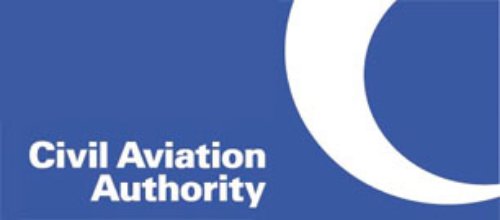The number of organisations given permits to use unmanned aircraft systems in the skies over Britain, including police forces and film-makers, has increased by 80% since the beginning of the year.
The figures have been released ahead of a warning by mainstream pilot union representatives at a parliamentary hearing on Monday that there should be tougher rules governing larger remote aircraft in the future and enhanced security measures at ground level to protect against control of these aircraft being seized by force or by hacking into computer systems.
Figures released by Britain’s aviation regulator reveal that it currently authorises 359 operators using drones weighing under 20 kg for work purposes.
Since 2010, the Civil Aviation Authority has required operators of small unmanned aircraft used for aerial work and those equipped for data acquisition and/or surveillance to obtain permission.Organisations on the list currently include three police forces (Staffordshire, Sussex and the PSNI), the Ministry of Defence’s Defence Science and Technology Laboratory (DSTL), the BBC, universities and a large number of film production and photography companies.
Typical of other operators on the list is Bristol Drones, an aerial photography business involved in projects such as the HighWaterLine Bristol project, which filmed a 32-mile line through the city based on Environment Agency data to attempt to highlight the risk of flooding.
Other firms involved in aerial photography of events, construction progress as well as surveys and the media industry include Outrageous Eye, Buzz Cameras, Aerial Video Guys and Earth Below Films.
However, the 359 operators stand apart from what experts believe are the thousands of drones being operated by members of the British public, sometimes in flagrant breach of laws prohibiting their flight over populated areas.
The future might be in even larger drones – flown beyond the line of sight and over longer distances – a sector whose global worth is tipped to be more than £100bn, but which is not without controversy.
Drones weighing more than 20 kg are banned from flying in British civilian airspace other than over a military base at Boscombe Down and in a large area in west Wales at the site of a former military base at Aberporth, now known as the National Aeronautical Centre.
A hearing on Monday of a House of Lords committee investigating the civilian use of drones will be addressed by a range of figures from the aeronautical sector.
Jim McAuslan, general secretary of the British Airline Pilots’ Association said ahead of his appearance: “The technology is developing quickly and we could see remote aircraft the same size as a Boeing 737 being operated commercially in our skies within ten years.”
The association is also voicing concerns about the need for safeguards for smaller drones, stating in a written submission: “Even a small RPAS [remotely piloted aircraft system] could cause serious injury, or even death, if control of it is lost. It is not just the weight of the device that could cause injury (imagine being hit on the head by a frozen chicken dropped from fifty feet), they are, of course, equipped with numerous spinning blades. The option of mandating insurance for both commercial and non-commercial RPAS operations should be considered.”
Ray Mann, the NAC’s owner, who will also give evidence at the Lords committee on Monday, is concerned regulation could potentially choke what he believes could be a valuable new industry for the UK, particularly around the use of large drones for uses such as freight.
But referring to smaller drones under 20kg, he added: “My guess is that there are a few thousand unregistered users who are not doing work but who are just playing with machines that you can buy for under a thousand pounds and I think that is a regulatory area that is probably going to be the biggest headache for everybody.”
“Regulation needs to come in to ensure that they conduct themselves properly and I think that is going to be tough. How do you police it?”
To date, the CAA has pursued two successful prosecutions over illegal drone flights this year, although a spokesman told the Guardian that the regulator was currently looking at “a couple” of other potential breaches of the rules. The cases in question are understood to relate to breaches of the distance parameters. It is prohibited to fly remotely piloted vehicles over large gatherings of people of 1,000 or more at any height, or within 50 metres of a building or structure.
The CAA, which issued renewed warnings about the rules after aerial footage apparently shot by a drone over Liverpool FC’s Anfield stadium was posted online, also said it was acting whenever it felt that video footage suggested that investigations were needed.
The Lords committee, which has already held a series of hearings, will hear from a range of witnesses including industry representatives. Questions will include: “How should drone regulation tackle potential infringements in relation to data protection and privacy?”
Privacy issues have, until recently, played a major role in stalling the greater professional adoption of drones in the US.
In its submission, BALPA has told the Lords committee: “The public in the UK do not seem to be as concerned about having more CCTV cameras than other countries but if data starts to be collected on individuals using RPAS this may well become a serious issue. There may be a need to introduce specific privacy regulations for RPAS as the majority of rules will have been written when methods of collecting information on people did not include close aerial surveillance.”
Source: The Guardian

